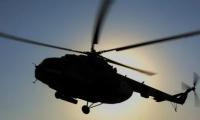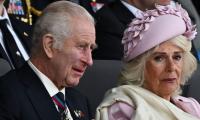The two-day Belt and Road Forum for International Cooperation was held in Beijing on May 14-15, 2017. The event, attended by Prime Minister Mian Muhammad Nawaz Sharif and all four chief ministers of Pakistan, extended great opportunities of economic progress for Pakistan. They also got the chance to meet 28 heads of state and government, about 50 leaders of international organisations, over 100 ministerial-level officials and over 1,200 delegates from various countries and regions who were participating at the mega event.
During his stay in Beijing, the prime minister had meetings with Chinese President Xi Jinping and Prime Minister Li Keqiang. The three men discussed and reached many agreements, especially regarding the international airport for Gwadar. This, once again proved that China-Pakistan Economic Corridor (CPEC) is not only beneficial for both countries but for the entire region and many international companies.
An oped, ‘Highway to sell: how $55b trade corridor rekindled China-Pakistan love affair’ by Tom Hussain published in ‘South China Morning Post’ says: “A US$55 billion programme to link the routes of China’s Belt and Road plan through Pakistan has revived a relationship that began with the Karakoram Highway”. While highlighting the significance of China’s One-belt, One-Road (OBOR) initiative, Hussain mentions that “most Pakistani political opposition was silenced in December 2016 when Beijing agreed to include projects proposed by opposition-controlled provincial governments, boosting the scale of CPEC to US$55 billion from the original US$46 billion”.
Like many others, Hussain cautions: “The success of CPEC may depend less on politics and more on Pakistan’s ability to balance the expense of the project against its impact on economic growth – a matter particularly pertinent given Pakistan’s weak finances. Amid stagnant exports and falling remittances, surging imports of Chinese machinery for CPEC projects contributed heavily to a 135 percent jump in Pakistan’s current account deficit between July last year and March, according to figures released by the Central Bank in April”.
Since 1947, Pakistan has been struggling to become a self-reliant economy that can end its dependence on foreign donors that will inevitably also end its political subjugation. The challenges on the economic front include huge fiscal and current account deficits, burgeoning debts, perpetuation of an elitist economy, a growing gulf between the rich and poor, economic disparities, an uneven development model, an oppressive tax system, sluggish economic growth, lack of investment to accelerate growth and create new jobs, dearth of skilled labour, dwindling exports, rising imports, inadequate infrastructure development – just to mention the major ones.
Hopes are now pinned on CPEC, which official quarters claim would be a ‘game changer’ and turn Pakistan into one of the largest economies in the coming years. After taking into account the size of CPEC-related projects, all credit rating agencies made positive remarks. They stated that energy projects throughout the country would ultimately reduce the cost of power generation, lowering the need for electricity subsidies – a key burden on the federal budget – and “improving economic growth, which would in turn increase tax revenues for the government”. Obviously these two factors can substantially reduce the budget deficit and resultantly ever-increasing debt servicing.
It is true that many of the key benefits of energy projects under CPEC would not materialise until 2018 but some will start accruing during 2017. CPEC envisages 21 agreements for energy (gas, coal and solar) and 14 out of these will be providing up to 10,400 megawatts (MW) of energy by March 2018 to make up for the 2015 energy shortfall of 4,500MW. According to China Daily, these projects should generate up to 16,400MW of energy altogether. This is what we need to induce local and foreign investors to establish new businesses.
It is time we came out of ‘economic despair’ and utilised CPEC as an opportunity to reform our outdated elitist structures that are the main impediments to our robust economic growth. A new era of economic development is at our doorstep. We need to upgrade all our delivery systems to make this historic opportunity a success. Much-needed foreign investment and development of infrastructure is coming from China – this is a reality and not an illusion as many sceptics portray. We need to make the best use of it.
Execution of all CPEC projects – including those that will be conceived after the infrastructure is completed – can bring prosperity to Pakistan. The corridor will make the country one of the largest economies of the world. The challenge of removing inefficiencies from our administrative structures that are change-resistant is formidable but not impossible. There is a realisation that we should move towards modern and efficient delivery systems. CPEC, being a multi-faceted project, will essentially pull public and private sectors onto a fast track development mode. And so it will prove to be a blessing for Pakistanis who are otherwise suffering on account of lethargy and indifferent attitudes.
The fruits of CPEC connectivity would be enormous for the entire region without which the huge potential of trade within South Asia cannot be achieved. Imagine hundreds of service stations along the roads giving employment to our youth, acceleration of trade between different parts of Pakistan, boost to tourism, peace and prosperity as Afghanistan, India and Iran transit trade through CPEC. There is no doubt that this would bring prosperity to the millions inhabiting South Asia. It is thus imperative for the government of Pakistan and all stakeholders to highlight the advantages of CPEC and create an atmosphere of love and fraternity among all the beneficiaries.
The new dawn of economic wellbeing for Pakistanis is still a dream but it can be turned into a reality – the only thing we need is to ensure that all citizens get adequate opportunities to prosper and benefit equally from economic growth. We must move fast to end economic apartheid that is presently inbuilt in our elitist structure. Without removing these distortions, the real benefits of even mega projects like CPEC could be concentrated in just a few hands – the rich and mighty having control over resources.
Equitable growth can come through great initiatives like CPEC if we implement the Chinese model suggested by the former general secretary of the Communist Party of China, Hu Jintao. He said: “A harmonious society should feature democracy, the rule of law, equity, justice, sincerity, amity and vitality”.
The writer is an advocate of the Supreme Court and adjunct faculty at LUMS.
Email: ikram@huzaimaikram.com
Twitter: @drikramulhaq
After November 30, it will be impossible for ordinary internet users to access all banned websites, including X
Muslims participated alongside their Hindu fellow villagers and other residents of area
For last eight years, HEC's budget has been virtually stagnant in absolute terms
Home to 14 million people, Lahore has always been celebrated as Pakistan’s historical, culinary, and cultural hub
Partnership between Pakistan and China in media and culture reflects shared commitment to strengthening bilateral...
This article focuses on single error committed by our respected judiciary which haunts me more than I would care to...







